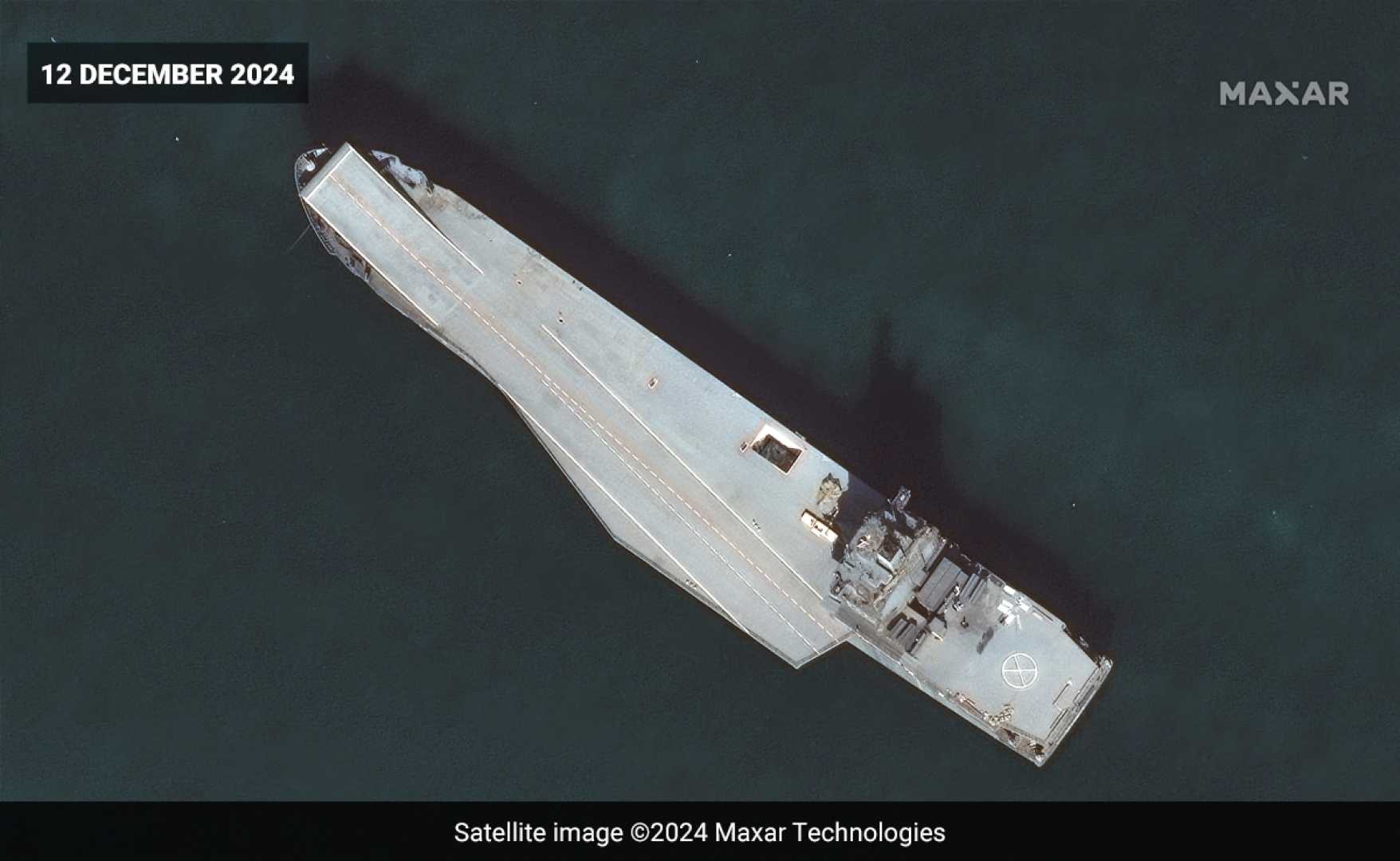World
Iran’s New Drone Carrier Raises Regional Security Concerns

Tehran, Iran – Iran’s Islamic Revolutionary Guard Corps (IRGC) has unveiled its first drone carrier, the Shahid Bagheri, in a move that has sparked significant debate regarding its implications for regional security. The vessel, a converted commercial ship, showcases Iran’s intent to expand its naval capabilities and operational reach into the Persian Gulf and beyond.
Officially revealed during a military exercise on December 12, 2024, the Shahid Bagheri features an approximately 590-foot runway, hangars for drones and helicopters, and the capacity to operate for extended periods without refueling. While experts agree that the ship enhances Iran’s maritime surveillance abilities, they caution that its tactical effectiveness may be limited.
Farzin Nadimi, a naval expert at the Washington Institute, explained the carrier’s strategic role: “It can serve as a useful tool for power projection and support anti-piracy and maritime security missions.” However, he also noted that the vessel’s large footprint makes it an easy target for modern anti-ship weapons. “It lacks adequate protection, which makes it vulnerable in combat situations,” Nadimi said.
Shahin Modarres, an analyst at the International Team for the Study of Security Verona, echoed these concerns. “In a conflict scenario, the Israeli air and naval forces could easily track and neutralize the ship,” he stated. Modarres emphasized that although the carrier could potentially launch drones for reconnaissance and limited strikes, its lack of integrated naval strike group support leaves it exposed to attacks.
Despite its limitations, the Shahid Bagheri’s existence may heighten concerns among Gulf states such as Saudi Arabia and the United Arab Emirates. Previous Iranian drone attacks, particularly against these nations, have prompted them to enhance their defenses against aerial threats. “The vessel’s deployment may be perceived as an escalation, compelling regional actors to strengthen their own naval capabilities,” Modarres explained.
The presence of the Shahid Bagheri in international waters could also increase tensions and lead to a reinforcement of U.S. naval assets in the region. “With this drone carrier potentially operating near major maritime chokepoints, such as the Gulf of Aden and the Strait of Hormuz, there could be strategic ramifications that affect U.S. interests,” Modarres noted.
Furthermore, the Shahid Bagheri is seen as part of Iran’s broader strategy of asymmetric warfare, a method that aims to compensate for conventional military disadvantages by employing unconventional tactics. Although the carrier represents a step forward in Iran’s naval capabilities, analysts remain skeptical about its ability to effectively project power or conduct successful offensive operations against well-defended adversaries.
Nadimi asserted, “While the deployment of the Shahid Bagheri may offer Iran certain advantages, its impact should not be overstated. For now, it’s more of a propaganda tool than a functional threat.” He further added that integrating missile corvettes to escort the vessel could mitigate some of its vulnerabilities, although this only partially addresses the inherent risks involved.
As Iran continues to develop its naval assets amid growing regional tensions, the introduction of the Shahid Bagheri will likely continue to influence perceptions of security dynamics in the Persian Gulf and surrounding areas.












